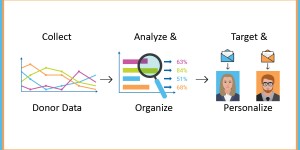If you have noticed your mailbox filling up again, there’s a reason. After a long period of decline, marketers are starting to mail again.
It doesn’t take a rocket scientist to figure out why. Print works. It might not twist and spin and play interactive games like online media, but it’s effective. In spite of the many predictions that print would continue to decline in favor of online media—even after the recession—as the U.S. economy recovers, marketers are now flocking back to print.
But if you’ve noticed, it’s not yesterday’s print. Today’s print marketing looks very different from the “spray and pray” method traditionally used in the marketing world. This is smart print.
WHAT MAKES IT SMARTER?
It’s targeted
Today’s print is being segmented into shorter but more targeted runs. Marketers are segmenting their mailings based on any variety of factors, whether age, interest, ethnicity, or other demographic. They may be marketing the same or similar products to each demographic group, but they are speaking to them on a more targeted basis. This automatically makes the mailings more effective for very little additional cost.
It’s personalized
We’re living in the “age of me.” Consumers are used to personalized recommendations online and personalized discounts at the cash register. They have come to expect marketers to cater to them on an individual basis.
With data-driven print (also called 1:1 printing, variable data, or personalized printing), marketers can provide the same kind of personalized attention in direct mail or any other printed piece. You can talk to each person by name and personalize messaging or offers based on what you know about them.
It’s multi-channel
J.C. Penney shocked the marketing world when it announced that it would stop printing its “Big Book” catalog in favor of slimmer, more targeted specialty catalogs. And there has been yet another collective marketing gasp as the giant retailer has announced that it will cease printing its specialty catalogs, too. Multichannel Merchant called the move “nuts.”
In fact, the retailing magazine reports that, after shutting down the Big Book, J.C. Penney has admitted that “ceasing [production] hurt total sales more than it had expected in the second quarter of 2010” (MCM, November 2010). Now the cataloger wants to stop mail order altogether?
Consistently, research shows that print and online media have a symbiotic effect. When print and online channels (email, social media, Web) are used together, sales go up. When print is dropped in favor of online channels alone, sales go down. This is why print should always be part of any serious marketing strategy.
So forget about what you thought you knew about printing. It’s time to smart print: print that is targeted, personalized, and part of a larger multi-channel marketing campaign. Talk to us about making your print smarter!
More Insights to Enjoy:
+ Tips on Building a Better Brochure
+ Think E-Media Beats One to One Print? Think Again {Consumers Love Getting Mail}
+ 7 Ways to Help Stretch Your Print Dollars
© Action Graphics, 2012. Article taken from our e-Newsletter, Action Insights for your Inbox. Sign up today to receive future copies of our newsletters.



